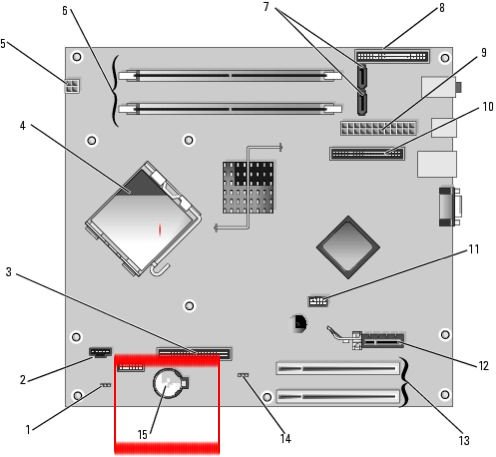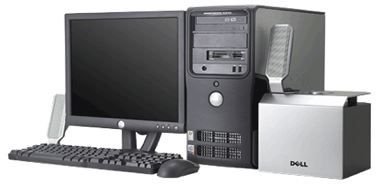We Fix: Dell e310 Won't Load USB Keyboard and Mouse
Released back in October of 2005, the Dell e310 is turning into something of an archaic machine by today’s standards. In a world where most computers have 500GB hard drives and at least 2GB of RAM, an 80GB HDD and 256MB of memory really start to show their age very quickly. Short of doing nothing but typing, if you’re still using this computer, I’d highly recommend an upgrade to something newer.
That being said, a wonky keyboard and mouse on one of these computers probably only has a minimal amount to do with how old it is. Chances are the bigger problem is how well you’ve taken care of the USB ports and connectors on the devices, as well as the amount you use each one. If you think you may not have taken utmost care with your computing devices, read onward; the next sections are meant to help you.
The Bad News: It’s a Common Problem
When the e310 came out, it was met with pretty mixed reviews, and a slew of problems began popping up across internet forums and help sites. One of these problems is that the keyboard and mouse simply wouldn’t respond, and the computer wouldn’t even load properly. This could be due to a number of factors, and there hasn’t really been a definitive one-size-fits-all answer to it, but there are a few things you can try that generally fix it right up.
Try a Hard Reset

Often times people will tell you that the first thing you should try when troubleshooting a device that used to work but does no longer is restarting the computer, and unplugging/replugging everything when it’s shut down. This has a lot of truth to it, but it doesn’t always work as you would hope. That’s why, now, people will recommend doing a “hard reset,” which is similar in idea but a lot more thorough in kick-starting everything back into default order.
To do this on the e310, you’ll want to shut down your computer, unplug all of the cords attached to it (including the power cord), and open up the side panel so you can see inside. Refer to the diagram on the left and locate the battery socket, which is indicated by the number “15’”. Once you find it, pry it out using your fingers or another non-conducting object. This means no materials made from metal or covered in water. Be moderately careful, but it’s pretty hard to goof up this part.
You have two choices here: Either wait a minute and put the old battery back in, or go out and buy a new battery to use. If you choose the latter of these two, make sure it’s a proprietary Dell battery so it doesn’t explode when you put it in the computer. And I’m serious about that.
After replacing the battery, put everything back together and start it up to see if it fixed anything.
System Restore
Much like the easy to use “Time Machine” on Mac OS 10.5 models, Windows also has its own sort of time machine that can take your computer’s settings back to a day when everything worked. It can’t restore old files or retrieve things once lost, but in terms of hardware settings and things like that, it can fix you up in a jiffy.
To do this, start your system and press F8 to enter the choices for booting into ‘safe mode with command prompt’ (this often times works regardless of the fact that regular safe mode doesn’t) and then use the command called “rstrui.exe”, without the quotes. This should allow you to select a date before your keyboard and mouse went out of whack, and restore the computer to that particular time. When you complete this process, allow your computer to start up normally and see if anything changed.
Note: The System Restore is great when it works, but often times it’ll give you an error saying that it could not restore your system.
Other Repair Options
Once you’ve tried both of the previously mentioned options, we know that our problem is one of two things: Either the problem is on the firmware side of things and is too hard to fix without a complete reinstallation of Windows, or there’s a problem with your keyboard and mouse physically. This could come on the form of a broken USB port, broken USB connectors, or any number of other things, but generally they are not worth the hassle to fix. Keyboards and mice aren’t very cheap to buy anyhow, especially if you go wired.
Still, there is one more thing you can try, but it’s a bit of a hassle; repair-install Windows entirely by getting your install disk, inserting it, and booting the whole computer from that disc. Once you boot up, follow the instructions for installing Windows until a box pops up asking if you want to repair an existing installation. Select “yes” and continue with the process.
If this doesn’t work, then you’re stuck to buying a new keyboard, or better yet, getting a new computer entirely. If it did work, then congratulations and happy typing in the future.
References
- [Image] CNet, http://reviews.cnet.com/4505-3118_7-31594474.html
- [Image] Dell Documentation, http://support.dell.com/support/edocs/systems/dim3100/en/sm/techov0.htm#wp1058089
- [Information] Microsoft Windows Help, http://windows.microsoft.com/en-US/windows-vista/Start-System-Restore-from-a-command-prompt
- [Information] Dell Documentation, http://support.dell.com/support/edocs/systems/dim3100/en/sm/parts0.htm#wp1043338
- [Information] Dell Community, http://en.community.dell.com/support-forums/desktop/f/3514/t/19285559.aspx
